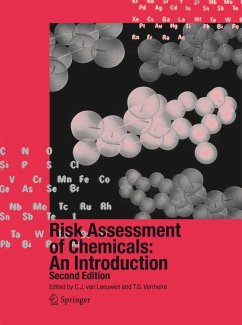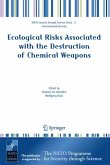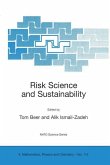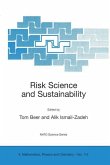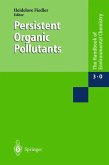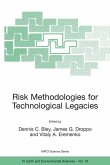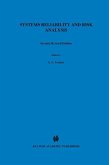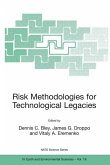Chemicals are used to make virtually every man-made regard to their production, formulation, use and disposal. product and play an important role in the everyday life It will provide a high level of protection of human health of people around the world. The chemical industry is the and the environment and, at the same time, enhance the third largest industrial sector in the world and employs competitiveness of the EU chemicals industry. millions of people. Since 1930, global production of chemicals has risen from 1 million tonnes to over 400 Successful implementation of REACH will be a million tonnes annually. In 2004 the global sales were challenge. It will involve 30,000 chemicals, 30,000 estimated at EUR 1776 billion. The EU accounts for companies, a newly created European Chemicals approximately 33% of global sales. This gradual increase Agency and many other stakeholders. REACH will also in the production and widespread use of chemicals was be a scientific challenge. It willboost further scientific not without "cost". While chemicals play an important research into sustainable chemistry. It will also make us role in products for health and well-being, they may also aware of the scarce human resources currently available pose risks to human health and the environment. to meet these challenges.
From the reviews of the second edition:
"This is the second edition of a book published in 1995 and is laid out in a user friendly format. ... useful to those who were relatively new to chemical risk assessment. ... the risk management process is introduced in a clear manner, explaining the role that science has to play, and gives consideration to communication of risk to stakeholders. ... is intended to be used by those involved in the risk assessment of chemicals as well as students in technology, health and environmental sciences." (Julian Roberts, British Toxicology Society Newsletter, Summer, 2008)
"A relatively comprehensive and up-to-date introduction to the science and art of assessing risks of chemicals. The advancement of scientific knowledge in the field of biology and toxicology has been massive ... and the authors have done a very good job of trying to capture that knowledge expansion and still present it at an introductory level. ... Overall, I was very impressed with this textbook on risk assessment of chemicals. The authors clearly reflected their many years of experience in the field." (Robert D. Stenner, Environmental Science and Pollution Research, Vol. 15, 2008)
"An edited compilation of chapters with a total of 37 authors, but the editors have done a good job of ensuring that the tone and level of detail is consistent. ... Finally, the relatively large number of figures, tables, and text boxes make the book inviting. This book is particularly useful with respect to the problem of inadequate data. ... I believe that anyone who is involved in human health or ecological risk assessment of industrial chemicals would benefit from this book." (Glenn Suter, Integrated Environmental Assessment and Management, Vol. 4 (3), 2008)
"Risk Assessment of Chemicals: An Introduction will be useful to anyone involved with, or interested in, risk assessment and management of chemicals. ... This book provides an excellentresource to better understand and achieve international approaches to the identification, assessment, and the management of chemical hazards. ... This book will be a great resource for risk assessors, risk managers, policymakers, and educators. It would be highly effective for teachers of risk assessment; students should find its content to be both exciting and practical." (Barry L. Johnson, International Journal of Human and Ecological Risk Assessment, February, 2009)
"This is the second edition of a book published in 1995 and is laid out in a user friendly format. ... useful to those who were relatively new to chemical risk assessment. ... the risk management process is introduced in a clear manner, explaining the role that science has to play, and gives consideration to communication of risk to stakeholders. ... is intended to be used by those involved in the risk assessment of chemicals as well as students in technology, health and environmental sciences." (Julian Roberts, British Toxicology Society Newsletter, Summer, 2008)
"A relatively comprehensive and up-to-date introduction to the science and art of assessing risks of chemicals. The advancement of scientific knowledge in the field of biology and toxicology has been massive ... and the authors have done a very good job of trying to capture that knowledge expansion and still present it at an introductory level. ... Overall, I was very impressed with this textbook on risk assessment of chemicals. The authors clearly reflected their many years of experience in the field." (Robert D. Stenner, Environmental Science and Pollution Research, Vol. 15, 2008)
"An edited compilation of chapters with a total of 37 authors, but the editors have done a good job of ensuring that the tone and level of detail is consistent. ... Finally, the relatively large number of figures, tables, and text boxes make the book inviting. This book is particularly useful with respect to the problem of inadequate data. ... I believe that anyone who is involved in human health or ecological risk assessment of industrial chemicals would benefit from this book." (Glenn Suter, Integrated Environmental Assessment and Management, Vol. 4 (3), 2008)
"Risk Assessment of Chemicals: An Introduction will be useful to anyone involved with, or interested in, risk assessment and management of chemicals. ... This book provides an excellentresource to better understand and achieve international approaches to the identification, assessment, and the management of chemical hazards. ... This book will be a great resource for risk assessors, risk managers, policymakers, and educators. It would be highly effective for teachers of risk assessment; students should find its content to be both exciting and practical." (Barry L. Johnson, International Journal of Human and Ecological Risk Assessment, February, 2009)

